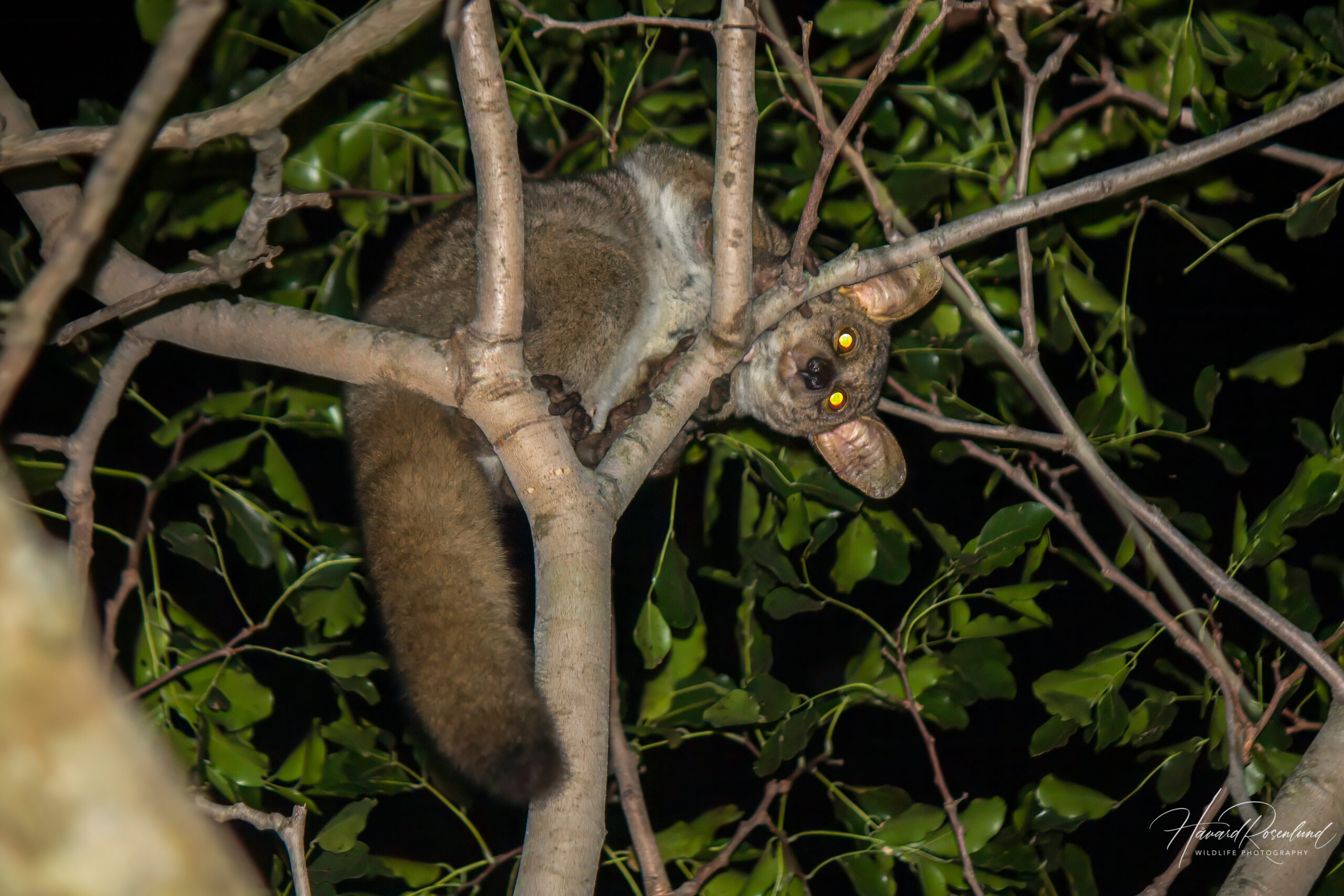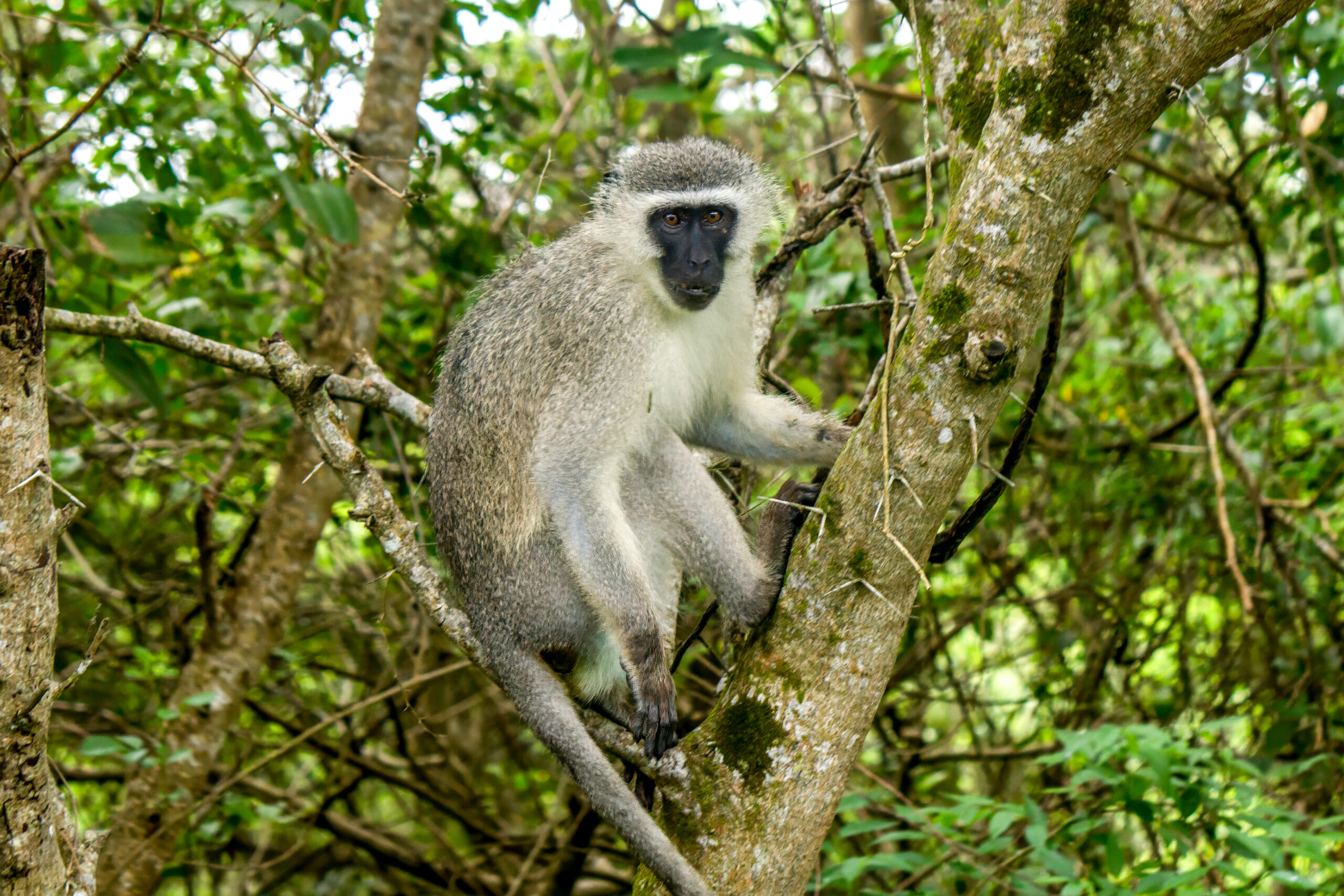Description
Thick-tailed greater galago, often referred to as thick-tailed bushbaby (Otolemur crassicaudatus), is a nocturnal primate and the largest of the galago species. It has a long thick tail slightly longer than its body, a round head with big round ears, large eyes, and a small snout. Their hands and feet are specialized for an arboreal life, with flattened fingers and nails for better grip when climbing. Coat varies in color from grey to brown between subspecies, but all have a lighter underside. The average body length is 32 cm (12.5 in), but it can reach lengths up to 47 cm (18.5 in). Tail can reach up to 55 cm (21.5 in) on large individuals. Males are larger than females and have an average weight of 1.5 kg (3.3 lb), while females average 1.3 kg (2.6 lb).
Diet, habitat & behavior
Thick-tailed greater galagos live most of their lives in trees, and are often found in tropical, and subtropical forests. Coastal and riverine forests are preferred habitats. They can also be found in savanna woodlands. Their diet is broad, and they will feed on fruits, gum, seeds, flowers, insects and other invertebrates, small reptiles, and even small birds. They are strictly nocturnal and will spend most of the day resting hidden away 5-12 meters off the ground in the hollow of trees or in tangles of creepers. They are agile animals and can swiftly move between trees using their climbing skills, as well as using their hind legs for powerful jumps. They often patrol the same route every night and only 20 % of their time active is spent foraging.
Social behavior
Thick-tailed greater galagos are mostly solitary creatures with their own territories. Males have the largest territories, and they usually span the territories of multiple females. Female territories often overlap, whereas male territories seldom do. Territories are marked with urine and a scent produced in a gland situated on the chest. Adults interact where territories overlap, as well as in large sleeping trees or at rich gum deposits. Playful behavior is often witnessed among juveniles, subadults, and females with young. The thick-tailed greater galago is a vocal species and it is famous for its cry at night, which resembles the cry of a human baby. This cry has given it the common name “bushbaby”.
Reproduction
Mating season occurs in June, and the females will go into estrus for two weeks. When a female is ready, she will give an advertising call to lure the male. Upon reaching the female in estrus, the male will copulate with her several times in the span of several hours. Successful males with larger territories will often have more females, and males will often compete for better territories. Gestation period averages 133 days and one to three young is born, with two being most common. Females reach sexual maturity at the age of two years, and males when they are slightly older. Young often stay with their mother until they reach sexual maturity.
Status
The thick-tailed greater galago, as well as other galago species, has a bad reputation in many African countries stemming from legends and old folklore. It is by many cultures seen as a bad omen. It is said that if you see one at night you will have bad luck and someone close to you might die. In some superstitious cultures it is feared as a mythical beast luring people close with its cry, before killing and eating them. Despite this, or maybe because of this, thick-tailed greater galagos are left mostly alone, and all three subspecies are widespread, common and without any immediate threat. It is listed as least concern on the IUCN Red List.








